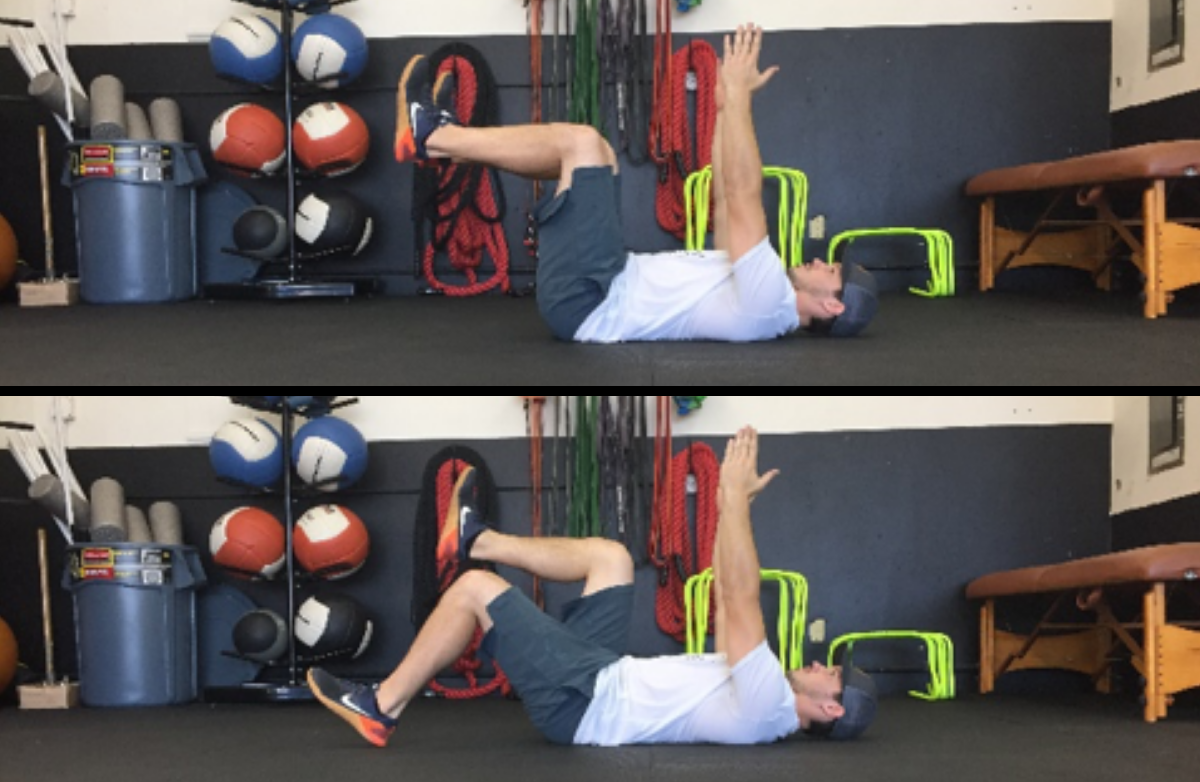That being said, for all the wonderful benefits of walking, there's actually no such thing as "one perfect exercise." Every activity, no matter how awesome, is always more beneficial when paired with a complementary one. It's a concept called cross-training, and it helps prevent overuse injuries, balances out the muscles and promotes better recovery after workouts. It also adds variety to workouts, which prevents boredom and burnout.
Strength training is an ideal cross-training activity to pair with walking. "Walking is a purely cardiovascular exercise and burns calories, but it generally does not help you gain muscle or improve strength, balance or coordination," says Laura Arndt, CEO of the Matriarc health and wellness app. "Walking uses the same muscles over and over again in the same way, so you need strength training to balance out the parts of your body you're not using, to keep your core strong and to protect your joints."
Plus, as personal trainer Clint Fuqua notes, walking without any strength work can actually cause some posture problems. "Walking, much like running, can cause shoulder and neck issues when posture is not kept in check, as shoulders will round forward and hips will start to tuck under," he warns. Walking lacks a resistance component—unless you incorporate hills or carry heavy objects (which we don't recommend)—and, as a result, won't help with maintaining muscle or bone mass, leading to weakness and potential bone breaks.
"Strength training will help to improve posture, increase lean muscle and bone mass, and reduce stress on your joints, along with improving [your] resting metabolic rate and your ability to burn more calories during the day, leading to an even better-looking body and longer, more enjoyable walks," Fuqua says.
Mini Band Exercises
Betina Gozo, Nike Master TrainerGozo recommends doing these mini band exercises three times a week as an effective complement to walking workouts. Do your best to keep your toes and knees forward, keeping tension on the band the whole time. "Don’t worry about picking a band that is super heavy in resistance," Gozo says. "Focus on your form and on activating your hips."
See this video for demonstrations of these four mini band exercises.
Mini Band Standing Abduction
- Start with your feet about hip-width distance with the band around your knees.
- Keep your knees and toes forward and grounded as you drive your knees in slowly and then drive them out.
- Repeat for two sets of 20 reps. (See video)
- Start with your feet about hip-width distance with the band around your knees.
- Keep your knees and toes forward and grounded, keep one knee still and then drive one knee in and out, keeping the other knee frozen.
- Repeat for two sets of 20 reps. (See video)
- Stand with your feet about hip-width distance with the band around your ankles.
- Step directly out to the side, building more tension on the band, focusing on keeping your knees and toes forward the whole time, then step the opposite foot back to hip width distance.
- Repeat for two sets of 20 reps. (See video)
- Stand with your feet about hip-width distance with the band around your ankles.
- Create a half circle, bringing your feet toward your body and drawing them up forward, then repeating on the other side, then reverse the motion.
- Repeat for two sets of 20 reps. (See video)
Front Lunges
Rocky Snyder, CSCS, NSCA-CPT, owner of Rocky's Personal Fitness TrainingThis exercise encourages proper weight bearing and proper joint action when walking.
- Stand tall with your feet parallel.
- Step forward with one leg. Descend the body’s weight onto the forward leg, bending into the hip and knee, while keeping the rear leg straight at the knee.
- Push off the front leg to return back to the starting position.
- Be sure not to allow the torso to lean forward or backward during the lunge. Maintain the head and shoulder position directly above the hips.
.JPG)
Rows
Clint Fuqua, trainer and health coachRows will help ensure proper shoulder posture while walking and during all other daily activities. This will take pressure off the neck and shoulders, which often leads to headaches, shoulder, elbow and even wrist pains.
- Start in a standing position holding elastic bands in both hands, or alternating hands. You will want a slight bend in your knees to help maintain balance and to keep your whole body engaged.
- Pull your shoulders back and down, and then pull your elbow(s) to your side(s) and then slowly let the arm(s) straighten back to the starting position.
- Repeat this 20 to 30 times, for two or three sets.
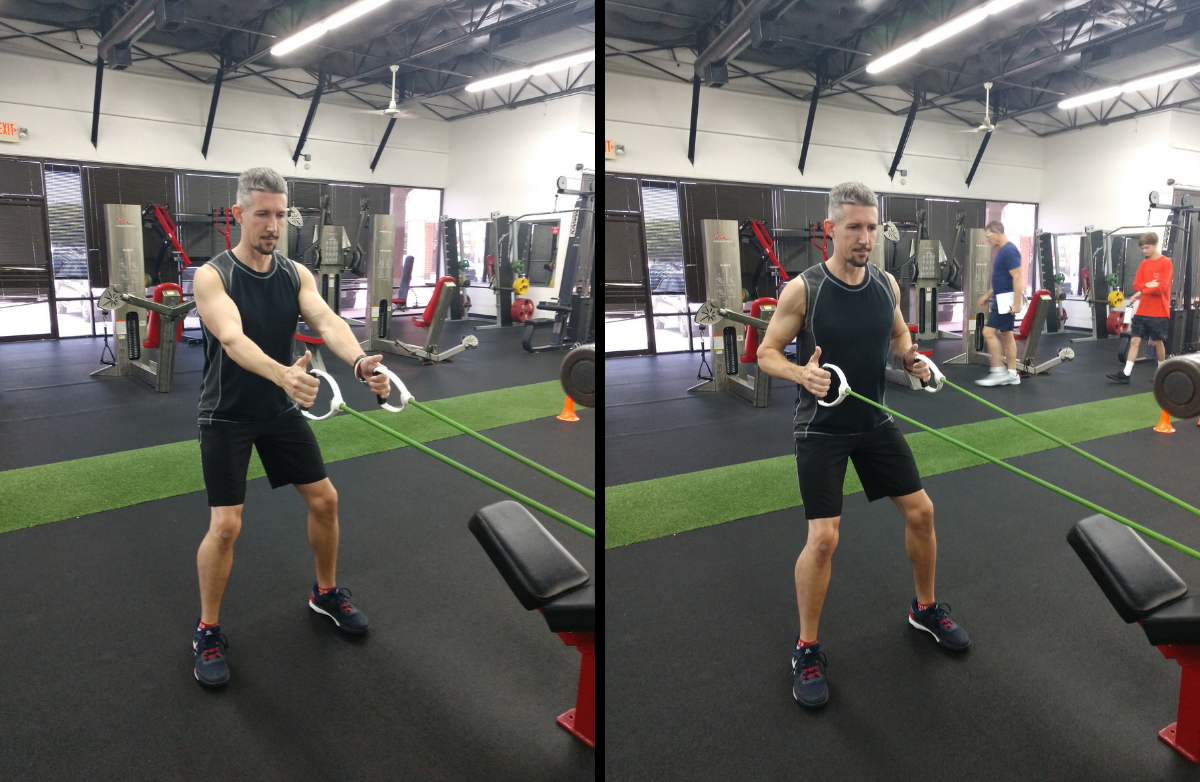
Bird Dog
Jacob Matthews, director of fitness and sports performance at California Sports and FitnessThis move strengthens the majority of the back muscles unilaterally, helping to fix any imbalances.
- Start on all fours with the hands under the shoulders and knees under hips.
- Maintain a tight and tucked core as you extend one arm and the opposite leg, creating a straight line from the hand all the way to the foot.
- Do not let the lower back arch or extend.
- Perform alternating reps for 10 to 12 repetitions for two to three sets.
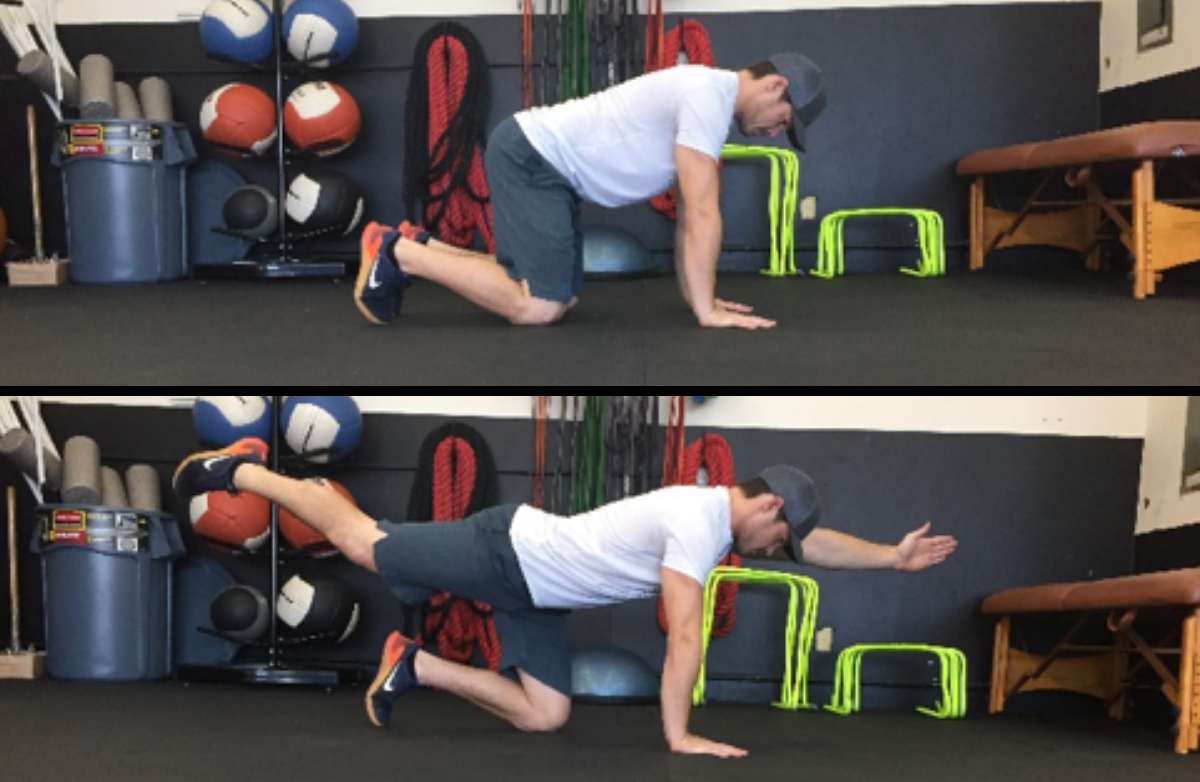
Lateral Lunge
Rocky SnyderThis move encourages the inner thighs to lengthen and shorten, which many walkers have a hard time doing.
- Stand tall with feet parallel.
- Step sideways with one leg. Descend the body’s weight onto the stepping leg, bending into the hip and knee, while keeping the trailing leg straight at the knee and foot flat on the floor.
- Push off the stepping leg to return to the starting position. Be sure not to allow the torso to lean far forward or backward during the lunge.
- Switch legs. Repeat for 10 to 12 reps on each side.
.JPG)
Superman
Laura Arndt, CEO of the Matriarc post-delivery wellness appThis exercise helps to strengthen your lower back and improve posture, something that's important for walkers.
- Start by laying on your stomach with your arms extended out in front.
- Turn your palms in to face each other, thumbs up.
- Raise your arms and legs off the mat and hold for a count of 20 seconds.
- Repeat 10 to 12 times.
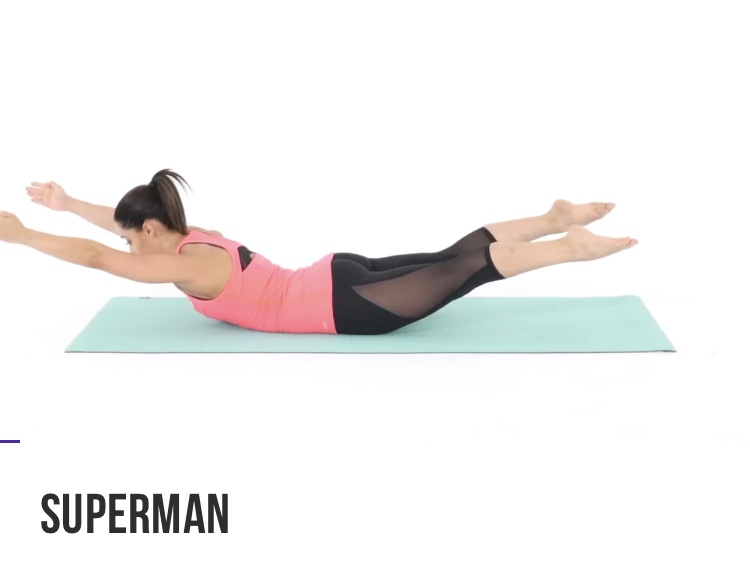
Squats
Clint FuquaSquats will further help with posture while strengthening the legs, lower back, arms and abs. The added bonus is light spine and hip loading, which will keep the bones strong and ensure that all related joints are functioning properly. The goal is posture and joint stability, so you can move well and stay in position during long walks or when lifting heavy objects.
- Stand with your weight evenly distributed across both feet and focus on hip motion rather than knee motion.
- Squat down to pick up the dumbbell, squeeze your shoulders back and keep your abs tight.
- Stand up straight and then return the dumbbell to the ground.
- Repeat this for 20 to 30 repetitions and two to three sets.
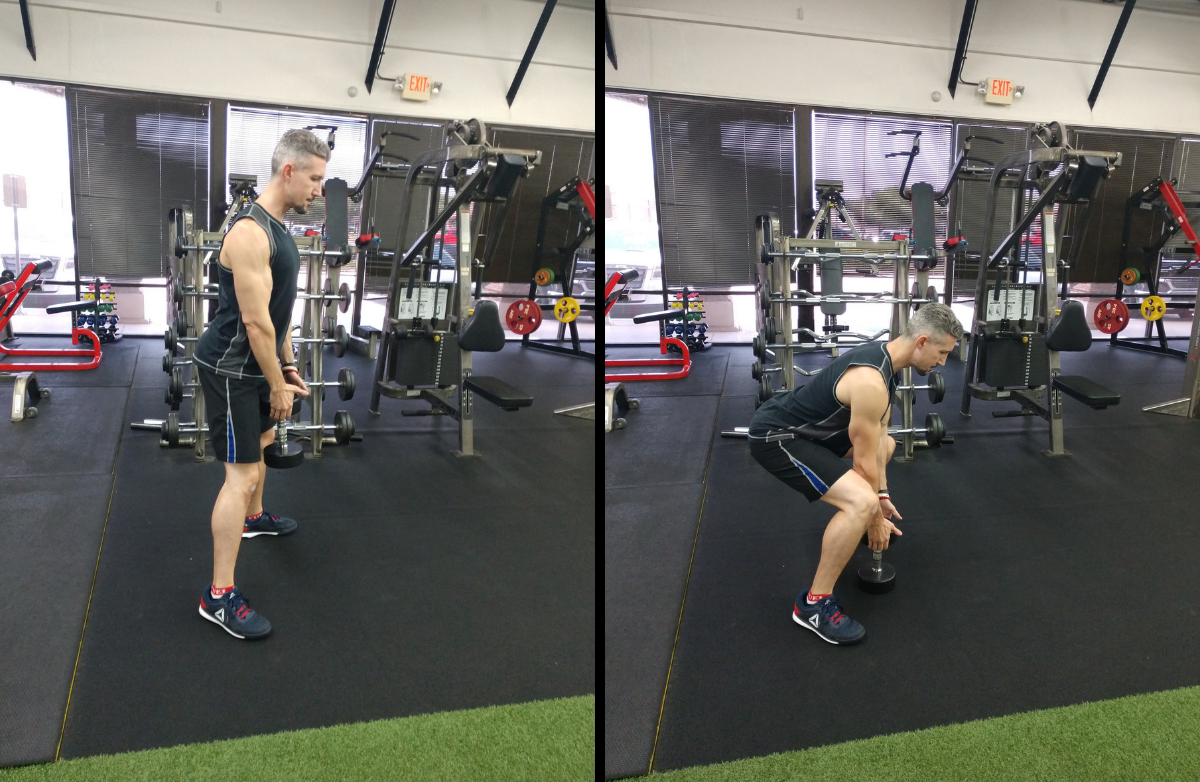
Calf Raises
Dr. Alice Holland, doctor of physical therapy at Stride Strong Physical TherapyThe calf is the one muscle that works the hardest in standing and weight bearing. Strengthening that muscle will help with shock absorption while walking.
- Start in a standing position. Hold onto a wall or chair for balance, if needed.
- Raise your heels up and hold for one second.
- Lower down to the ground slowly.
- Repeat 10 times for three sets.
.jpg)
Forward Leg Raises
Clint FuquaLeg raises can be done either sitting or standing. These will both help with strengthening lower leg muscles and stretching the hamstring and sciatic nerve to improve mobility and reduce tightness.
- Sit up straight with your abs tight.
- Start by pulling the toes back and flexing the thigh, raise your leg and hold for three counts, then return to the ground.
- Repeat this for 20 to 30 repetitions and two to three sets.
.png)
Side Leg Raises
Laura ArndtWalkers focus on only a forward and back motion, which can lead to weak and tight hips and hip flexors. You need some side-to-side motion to keep the hip muscles strong and to minimize the risk of injury.
- Start in the standing position with your feet shoulder width apart.
- Hold onto a wall or chair for balance, if needed.
- Raise your right leg out to the side and back down with control.
- Complete 15 repetitions and repeat on the opposite side.
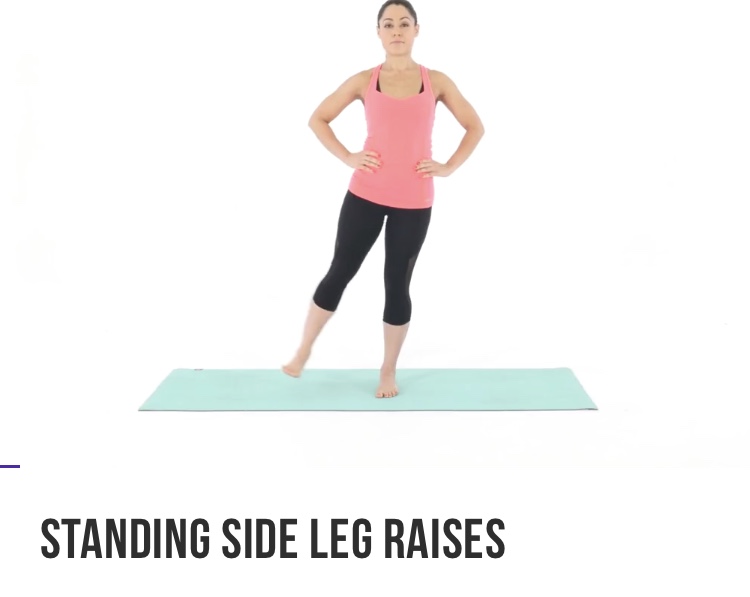
Glute Bridge
Jacob MatthewsThis exercise will strengthen the glutes which can help balance out the tight hip flexor caused by walking.
- Lay on your back with your knees bent and feet flat on the ground.
- Raise your arms straight above your shoulders and retract your scapula.
- Maintain a neutral spine as you drive your hips to the ceiling squeezing the glutes.
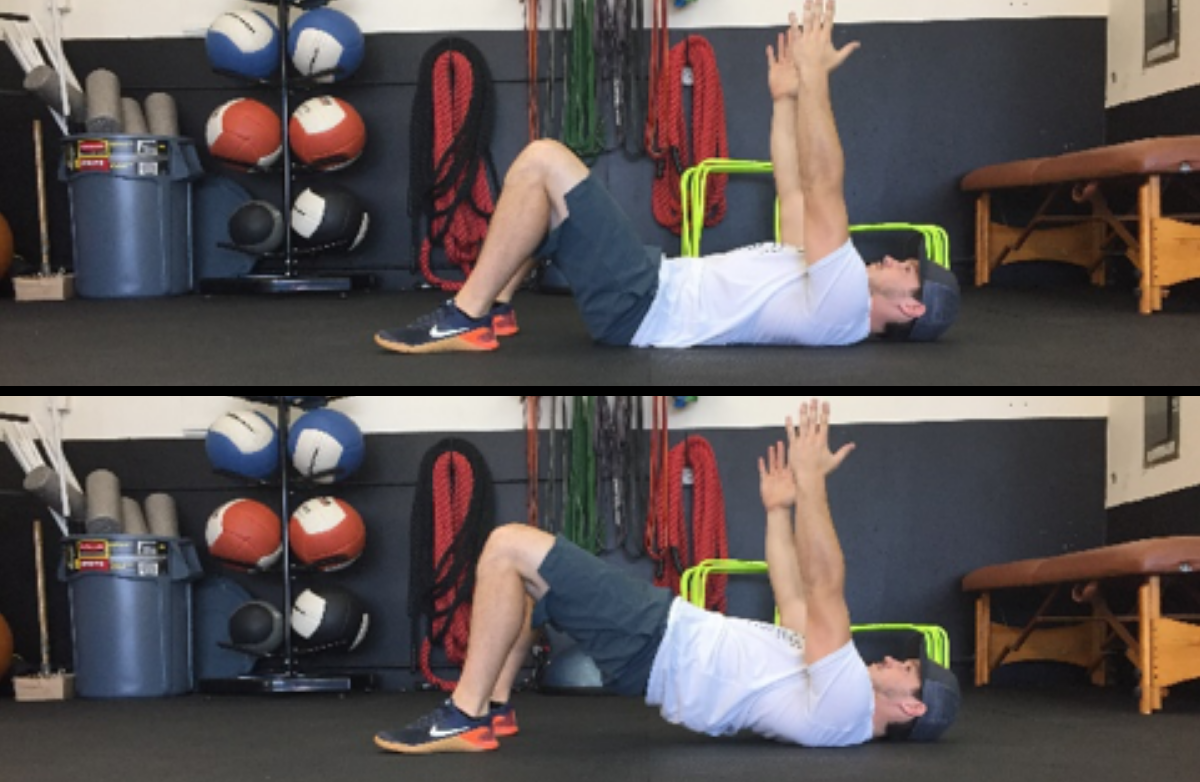
Crossover Lunge
Rocky SnyderThis exercise helps to train the biggest muscles, the gluteals, to properly load and then fire up to propel the body forward while walking.
- Stand tall with feet parallel. Step forward and across to the opposite side with one leg.
- Descend the body’s weight onto the forward leg, bending into the hip and knee, while keeping the rear leg straight at the knee.
- Push off the front leg to return to the starting position. Do not allow the torso to lean forward or backward during the lunge. Maintain the head and shoulder position directly above the hips.
- Switch legs. Repeat for 10 to 12 reps on each side.
.JPG)
Ankle Raises
Dr. Alice HollandThe anterior tibialis muscle worked in this exercise is responsible for picking the foot up off the ground when walking. It is also a muscle that can have spasms when walking for a long time.
- Start in a sitting position.
- Raise your forefoot while keeping your heel on the ground.
- Lower the heel to the ground and repeat 10 times for three sets.
.jpg)
Dead Bug
Jacob MatthewsThis move will help maintain a neutral pelvis through hip flexion and extension
- Lay on your back and bring the knees up above the hips, creating a 90-degree angle at the hips and knees.
- Maintain the angle as you alternate taking one foot to the ground at a time, touching the heel to the ground.
- Do not let the lower back come up off the ground as you complete the movement.
- Switch legs. Repeat 10 to 12 times on each side.
